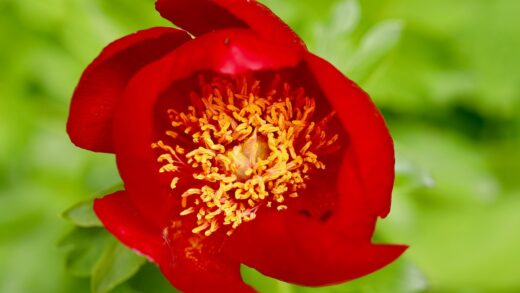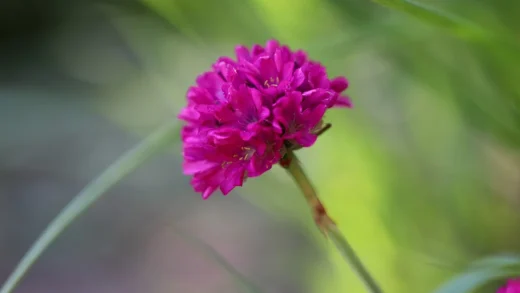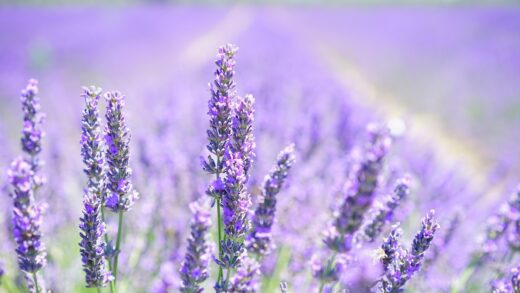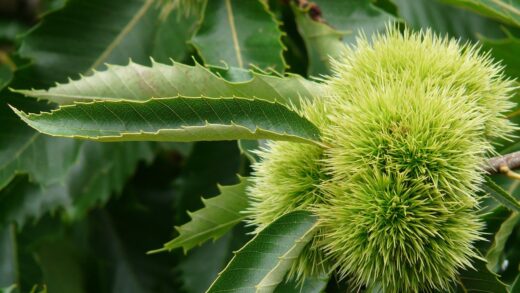One of the most appealing attributes of Geranium x cantabrigiense for any gardener is its remarkable resistance to most common pests and diseases. This inherent robustness is a significant part of its charm and contributes to its reputation as a low-maintenance and reliable garden performer. It is not completely immune, but the instances of it suffering from serious problems are rare, especially when the plant is grown in its preferred conditions. The fragrant oils in its foliage, for example, act as a natural deterrent to many common garden pests, including deer and rabbits, which tend to leave this plant alone in favour of more palatable options. The most critical factor in preventing the few issues that can arise is providing the right growing environment. Good cultural practices are the foundation of pest and disease management. This means ensuring the plant has well-drained soil, adequate air circulation, and is not overly stressed by drought or improper fertilization. A healthy, vigorous plant is far more capable of fending off potential problems than a weak or stressed one. Overwatering and poor drainage are the primary culprits behind the most common disease issue, which is root rot. By focusing on creating a healthy environment, you can proactively avoid most potential troubles before they even start.
While largely trouble-free, there are a few fungal diseases that can occasionally affect Cambridge cranesbill, particularly during periods of prolonged wet weather or in overly humid and crowded conditions. Powdery mildew, rust, and downy mildew are the most likely fungal culprits. These diseases typically manifest as coatings, spots, or discolourations on the leaves. While they can be unsightly, they rarely pose a serious threat to the overall health of an established plant. The best defence is prevention through proper spacing of plants to promote good air circulation, and watering the soil directly rather than the foliage.
In terms of insect pests, Geranium x cantabrigiense is seldom bothered. However, no plant is entirely pest-proof, and you might occasionally find common garden pests like aphids or slugs making a temporary home on your plants. Aphids are small, sap-sucking insects that can sometimes congregate on new, tender growth, while slugs and snails may be drawn to the foliage, especially in damp, shady areas. Typically, any infestations are minor and do not cause significant damage to the plant’s health. Healthy populations of beneficial insects like ladybirds and hoverflies in the garden will often keep aphid numbers in check naturally.
Ultimately, the key to dealing with any pest or disease on this geranium is to take a calm and measured approach. Often, the best course of action is simply to improve the growing conditions and let the plant’s natural resilience take over. Avoid the immediate impulse to reach for chemical sprays, as these can harm beneficial insects and are often unnecessary for the minor issues that might affect this tough perennial. By practicing good garden hygiene and providing proper care, you can ensure your Geranium x cantabrigiense remains a healthy and trouble-free component of your garden for many years.
Fungal diseases and prevention
Although generally disease-resistant, Geranium x cantabrigiense can sometimes be affected by a few fungal diseases, especially when environmental conditions are favourable for them. Powdery mildew is one such disease, appearing as a white, dusty coating on the surfaces of leaves and stems. It is most common in shady, humid conditions with poor air circulation. While it can be unsightly, it usually does not cause serious harm to the plant. The best way to prevent powdery mildew is to ensure your plants have enough space between them to allow for good air movement, which helps to keep the foliage dry.
More articles on this topic
Another potential fungal issue is rust. Geranium rust manifests as small, orange-brown pustules, typically on the undersides of the leaves. Severe infections can cause leaves to yellow and drop prematurely. Rust fungi thrive in mild, damp weather. To manage it, avoid overhead watering, as wet leaves create the perfect environment for the fungal spores to germinate. If you spot rust, promptly remove and destroy the affected leaves to prevent the disease from spreading further. Good garden sanitation in the autumn, by cleaning up fallen leaves, can also help to reduce the amount of fungal spores that can survive the winter.
Downy mildew, while less common, can also occur, particularly during cool, wet periods. It typically appears as yellowish spots on the upper surfaces of the leaves, with a fuzzy or downy greyish growth on the undersides. Similar to other fungal diseases, downy mildew is best prevented by cultural practices that promote drier foliage and better air circulation. If an infection does occur, removing the affected leaves is the first step. For persistent problems, a fungicide containing copper or sulphur can be used, but this is rarely necessary for this resilient geranium.
The overarching principle for preventing all these fungal diseases is to focus on creating an environment that is less hospitable to the pathogens. This means providing well-drained soil to avoid stressing the roots, spacing plants properly, watering at the base of the plant to keep the leaves dry, and cleaning up plant debris. A healthy plant grown in good conditions is its own best defence. By following these simple cultural practices, you can significantly minimize the risk of your Cambridge cranesbill ever succumbing to a serious fungal infection.
Common insect pests
Geranium x cantabrigiense is not a primary target for most insect pests, thanks in part to the aromatic oils in its leaves which many insects find unappealing. However, you may occasionally encounter a few common garden inhabitants. Aphids are one possibility. These small, soft-bodied insects use piercing mouthparts to suck sap from tender new growth, and they can congregate on the tips of stems or on the undersides of new leaves. A small population of aphids is usually not a cause for concern, as they are a favourite food source for beneficial insects like ladybirds, lacewings, and hoverflies.
More articles on this topic
If an aphid population becomes large enough to cause noticeable damage, such as distorted new growth or a sticky residue known as honeydew, there are several simple control methods. A strong jet of water from a hose is often enough to dislodge them from the plant. For more persistent infestations, a spray of insecticidal soap can be very effective. This is a low-toxicity option that works by disrupting the insect’s outer shell, but it must come into direct contact with the pests to be effective, so thorough coverage, especially on the undersides of leaves, is important.
Slugs and snails can sometimes be a nuisance, particularly in damp, shady gardens and during the spring when the foliage is young and tender. These molluscs chew irregular holes in the leaves, leaving behind their tell-tale silvery slime trails. The damage is usually cosmetic and rarely threatens the health of an established plant. There are numerous control methods, from hand-picking them off the plants in the evening to using beer traps or surrounding the plants with a gritty barrier like crushed eggshells or diatomaceous earth, which they are reluctant to cross.
A less common pest you might encounter is the vine weevil. The adult weevils chew notches in the edges of the leaves, which is mostly cosmetic damage. The more serious damage is caused by their larvae, which live in the soil and feed on the roots of the plants. This is more of a problem for container-grown plants than for those in the garden border. Healthy, vigorous plants in the ground can usually withstand some larval feeding, but if you notice a plant suddenly wilting and failing to thrive, it is worth checking the roots for the C-shaped, cream-coloured grubs. Biological controls containing pathogenic nematodes are an effective and environmentally friendly way to control the larvae in the soil.
Managing root and crown rot
The most significant health threat to Geranium x cantabrigiense is not a pest or a leaf disease, but rather root and crown rot. This is not caused by a primary pathogen attacking a healthy plant, but is instead an opportunistic disease that takes hold when the plant’s roots are compromised by overly wet, waterlogged conditions. The geranium’s roots, like those of most perennials, require oxygen to function properly. In saturated soil, the air pockets are filled with water, effectively suffocating the roots and causing them to begin to decay.
The symptoms of root rot can often be misleading. Above ground, the plant may appear to be suffering from a lack of water. The leaves may turn yellow, wilt, and the overall growth may be stunted. This is because the rotting, non-functional roots are unable to absorb the water and nutrients the plant needs, even if the soil is wet. If you notice these symptoms and you know the soil has been consistently damp, root rot is a very likely cause. The crown of the plant, where the stems meet the roots, may also become soft and mushy.
Prevention is, by far, the best cure for root rot, as it is very difficult to save a plant once the decay is extensive. The key to prevention lies entirely in providing excellent drainage. Before planting, amend heavy clay soils with copious amounts of organic matter to improve their structure. If your garden has a known drainage problem, consider planting your geraniums in raised beds or on a slope where water can naturally run off. Avoid planting them in low-lying areas where water tends to collect after heavy rain.
If you suspect an established plant is suffering from root rot, you can try to intervene. Carefully dig up the plant and inspect the roots. Healthy roots should be firm and white or light-coloured. Rotted roots will be dark brown or black, mushy, and may have a foul odour. Using a clean, sharp knife, trim away all of the affected roots and any rotting parts of the crown. Replant the healthy portion of the plant in a location with better drainage or in a container with fresh, well-draining potting mix. With luck, the remaining healthy tissue may be able to regenerate and save the plant.
The benefits of good air circulation
Good air circulation is a simple yet profoundly effective cultural practice that plays a critical role in preventing many common plant diseases, especially fungal ones. When plants are spaced adequately, air can move freely around them, which has several important benefits. Firstly, it helps the foliage to dry off more quickly after rainfall, morning dew, or irrigation. Since most fungal spores require a period of moisture on the leaf surface to germinate and infect the plant, keeping the leaves dry is a primary line of defence against diseases like powdery mildew, rust, and downy mildew.
Proper spacing is the first step to ensuring good air circulation. When planting your Geranium x cantabrigiense, be sure to follow the recommended spacing guidelines, typically 45-60 centimetres apart. While the area may look bare at first, the plants will quickly fill in the space. Resisting the temptation to plant them too closely together will pay off in the long run with healthier plants that are less susceptible to disease. Overcrowding creates a dense canopy of foliage where air becomes stagnant and humidity levels rise, creating the perfect microclimate for fungal pathogens to thrive.
In addition to initial spacing, occasional thinning or division of mature clumps can also help to maintain good air flow. As a clump of Cambridge cranesbill matures and spreads, it can become very dense. If you notice the centre of the plant is particularly thick with foliage, or if you have had issues with fungal diseases in the past, dividing the clump in the spring or autumn can help to open it up and improve circulation. This also has the added benefit of rejuvenating the plant and providing you with new plants to use elsewhere.
Managing surrounding vegetation is another aspect of promoting good air circulation. Keep the area around your geraniums free of weeds, as dense weed growth can also impede air movement around the base of the plants. Similarly, consider the placement of other, larger plants in the garden. While this geranium grows well under shrubs, ensure there is still enough space for air to move through. By consciously thinking about and promoting good air circulation, you are practicing one of the most effective forms of preventative medicine for your garden plants.

















